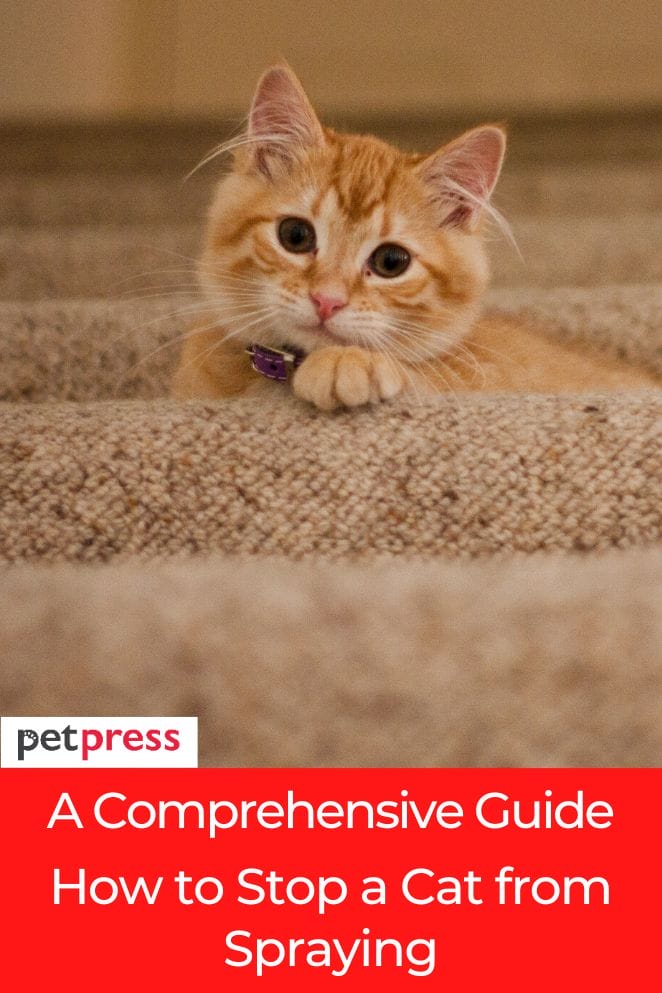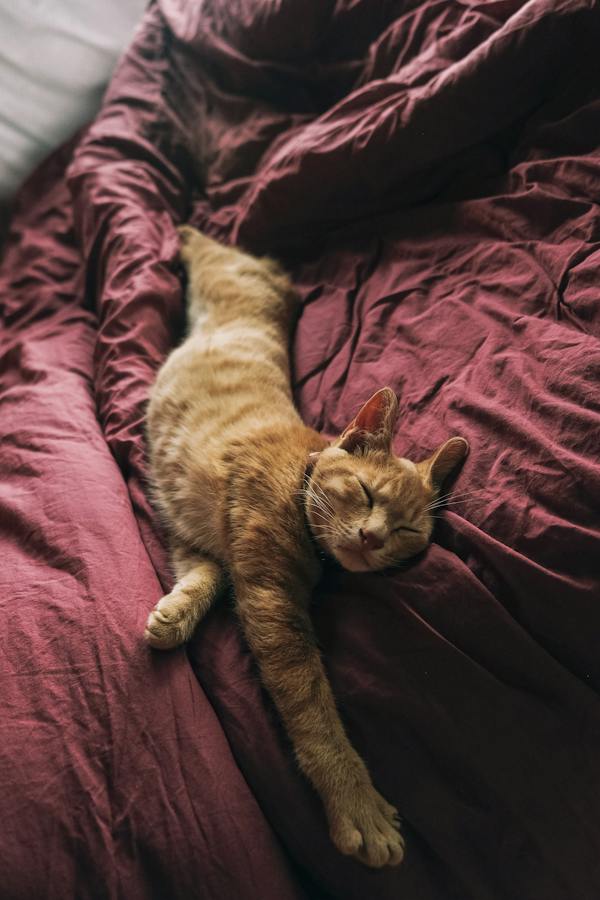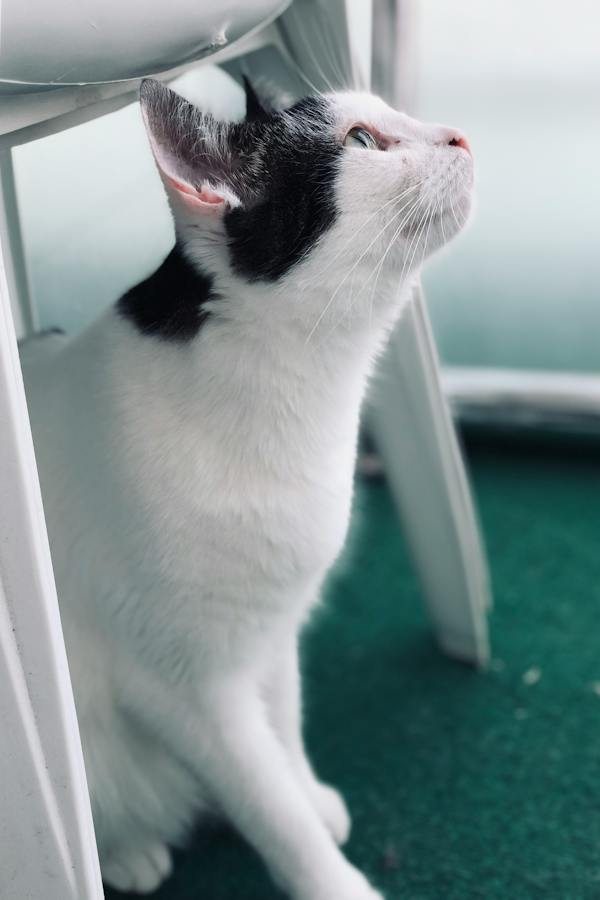
Cats are wonderful companions, but spraying can be a frustrating behavior for cat owners.
To stop a cat from spraying, it’s essential to understand what spraying is, why cats do it, and how to address this behavior.
In this comprehensive guide, we will explore different strategies and techniques to prevent and manage spraying behavior in cats.
By taking the necessary steps to address spraying, you can enjoy a happier, more peaceful living environment while safeguarding your investment.
What Is Spraying in Cats?
Spraying in cats is a distinct behavior characterized by the deposition of small amounts of urine on vertical surfaces.
It is crucial to distinguish spraying from urinating outside the litter box.
Cats engage in spraying as a means of communication, often marking their territory, expressing anxiety, or conveying stress.
Understanding this behavior is essential for effective management and ensuring the well-being of our feline companions.

Why Do Cats Spray?
Cats engage in spraying for a multitude of reasons, and understanding these motives is key to addressing this behavior effectively.
These include:
Territorial marking
Cats are creatures of habit, and one way they assert their space is through territorial marking.
This behavior isn’t exclusive to unneutered males; even spayed and neutered cats can be territorial sprayers.
It’s their instinctual way of communicating ownership of an area, letting other felines know, “This is mine.”
Communication among cats
In multi-cat households, the dynamics are like a subtle dance.
Cats use spraying as a form of communication.
It’s like they’re leaving little aromatic messages on vertical surfaces to set boundaries and announce their presence.
In the feline world, it’s akin to posting sticky notes around the house, but instead of writing, they’re using scent.
Stress and anxiety
Imagine being a cat in a world full of sudden changes – moving to a new home, meeting a new furry roommate, or even changes in the human household.
Cats, sensitive beings that they are, can get stressed out.
When stress levels rise, spraying can become their coping mechanism.
It’s like they’re saying, “Hey, things are a bit much for me right now, and this is how I’m dealing with it.”
Medical issues
Sometimes, cats aren’t just being dramatic; there might be a medical reason for their spraying escapades.
Pain or discomfort from health problems can trigger this behavior.
It’s their way of telling us, “Hey, something’s not right with me.”
Identifying and addressing these issues with a vet is crucial in managing and understanding their spraying behavior.
How to Stop Spraying

Neutering or spaying
One effective strategy to curb spraying behavior in cats is through neutering or spaying.
This surgical procedure can work wonders in reducing or completely eliminating the urge to spray.
In males, the operation tends to decrease territorial instincts and the desire to mark their surroundings.
For females, it helps control hormonal fluctuations that may trigger spraying.
Create a calming environment
Cats are sensitive souls, and environmental factors can significantly impact their stress levels.
To deter spraying, focus on creating a serene atmosphere.
Provide vertical spaces, like cat trees or shelves, offering them a vantage point to observe their territory.
Hiding spots and perches add an extra layer of security, helping cats feel more in control and less inclined to resort to spraying as a stress response.
Clean soiled areas thoroughly
Once a cat starts spraying, they’re likely to return to the same spot if the scent lingers.
To break this cycle, invest in enzymatic cleaners designed to eliminate the odor of urine.
These cleaners not only remove the smell (imperceptible to us), but they also break down the compounds that attract cats back to the scene of the spray.
Thorough cleaning is a crucial step in discouraging repeat spraying.
Use pheromone products
Pheromone-based products, such as Feliway, can be valuable allies in your quest to minimize spraying behavior.
Feliway mimics the natural facial pheromones that cats use to mark their territory as safe and familiar.
By diffusing these synthetic pheromones, you create a comforting environment, reducing stress and, consequently, the likelihood of spraying.
These products come in various forms, from sprays to diffusers, allowing flexibility in application.
Cleaning Up Cat Urine and Spray
Maintaining a clean environment is crucial when dealing with cat urine and spray incidents.
Thoroughly cleaning any areas where your cat has sprayed is essential to prevent recurring incidents.
Opt for enzymatic cleaners, specifically designed to eliminate the odor associated with cat urine.
These cleaners not only remove the scent detectable to your cat but also break down the compounds that may attract them back to spray in the same spot.
By employing enzymatic cleaners, you discourage your cat from marking the area again, contributing to a more hygienic and odor-free living space.

Conclusion
Effectively halting a cat’s spraying behavior demands a thoughtful and multifaceted approach.
Combine quick fixes, sustained strategies, and collaboration with your veterinarian for optimal results.
Prioritize environmental enhancements, incorporate scent markers, and don’t hesitate to seek professional guidance when necessary.
The commitment you invest in curbing spraying behavior will yield a more content and healthful living space for both you and your feline companion.

FAQs
Yes, although neutering can reduce spraying behavior, some neutered cats may still spray, especially if they feel stressed or threatened.
Cats that spray typically back up to a vertical surface, twitch their tail, and spray a small amount of urine. Urinating outside the litter box usually involves larger amounts of urine on horizontal surfaces.


GIPHY App Key not set. Please check settings